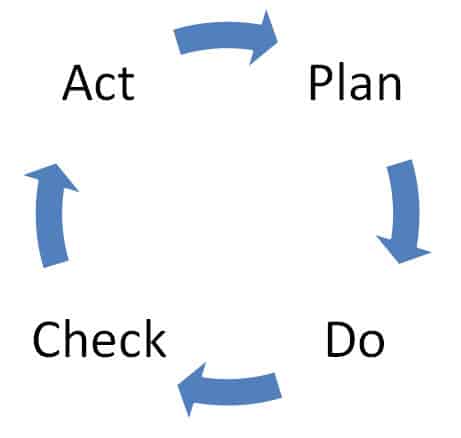The PDCA cycle, aka a Deming wheel, Shewhart wheel, or Shewhart Cycle, is the continuous improvement practice of making a Plan, Performing an action, Checking your results, and then Acting upon what you have learned.
It’s a popular improvement technique because it follows the natural progression of how people attack a problem.
Let’s get into a bit more detail.

Plan Do Check Act Cycle Overview
Plan
You or your organization’s leadership has identified an opportunity for improvement. In this phase, you learn all you can about the issue at hand by analyzing both the available data and possible options. Establish a plan for achieving the goal. Here you consider the changes but don’t actually implement them.
Do
In this phase, you carry out a small-scale version of the improvement you want to see. Call it a pilot program. The idea is to test out your hypothesis in a way that limits risk but also allows you to see significant results. Enact the changes detailed in the Plan.
Check
Here we close the loop and verify if the improvement action we did had its intended effect.
Measure and analyze the results.
Act
If our pilot was successful, we roll the changes out for full implementation. If not, we take a look at the data we did receive and challenge our previous assumptions in order to come up with a new, different plan.
Implement the necessary reforms when the results are not as expected.
In either case, the cycle repeats with the next experiment.
When to Use Plan Do Check Act Cycle:
- For continuous improvement.
- When starting a new project or creating a new product or service.
- When defining a process.
- To verify the prioritization of data collection or root causes.
- When implementing a change.

